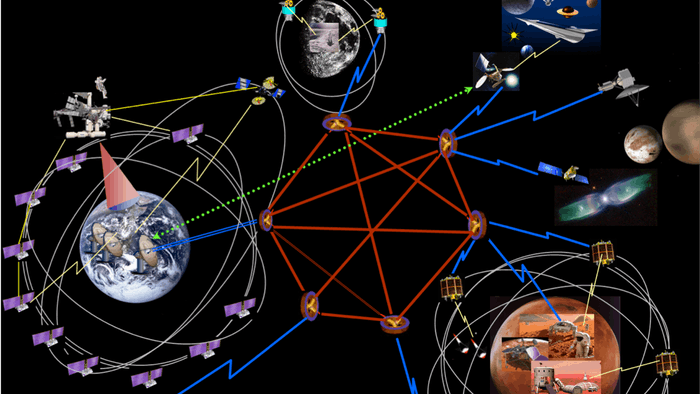NASA has made significant progress toward establishing a more reliable, and potentially solar-system-spanning communication system with the installation of a new breed of data network aboard the International Space Station (ISS). As its name suggests, the Delay/Disruption Tolerant Networking (DTN) service allows for the storage of partial pieces of information in the nodes along a communication path, which will allow for faster and more stable transmissions.
The system has been integrated with the ISS's Telescience Resource Kit and represents over 10 years of work from NASA and its partners as part of the agency's Advanced Exploration Systems (AES) program. AES seeks to develop technologies that could be instrumental in the future exploration of our solar system.
The more traditional internet protocol system previously used by astronauts aboard the station required each node of a network to be available at the same time in order for data to be transferred. For astronauts communicating from the ISS, these nodes are often satellites, which can be unavailable for any number of reasons, leading to significant disruptions in communications.
The DTN's ability to store and send partial bundles of information as and when a node becomes available has the potential to significantly reduce communication latency, allowing for a greater level of data availability and superior bandwidth utilization, as seen in this video.
The automatic "store and forward" networking service could also provide a reliable communications option for deep space exploration missions, as well as for pioneers taking part in NASA's ambitious manned mission to Mars. The partial data transmissions can be reassembled at "ground stations on Earth, robotic spacecraft in deep space, or, one day, humans living on other planets," says a NASA press release about the advance.
Furthermore, whilst DTN is being tested in orbit, the provision of a more reliable data distribution system will have a number of applications back on Earth. For example, the technology could allow for stable mobile communication capabilities in the wake of a natural disasters, where a lack of coordination between rescue forces could lead to further loss of life.
Source: NASA
